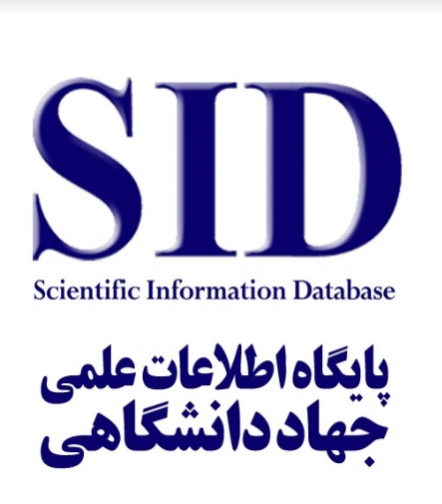Reforming the Financial Structure of Banks to Control Liquidity and Inflation
Keywords:
Reform of banks’ financial structure, liquidity control, inflation reduction, risk management, economic stabilityAbstract
In recent years, the Iranian economy has faced serious challenges regarding the rise in liquidity and inflation, which have not only led to a decline in purchasing power and public welfare but also hindered sustainable economic growth. Banks, as financial institutions that play a crucial role in liquidity management and inflation control, have a significant impact on improving economic conditions. However, weaknesses in the financial structure and inefficiencies in banking policies often exacerbate these challenges. The purpose of this study is to examine the effects of reforming the financial structure of banks on controlling liquidity and reducing inflation in the Iranian economy. The research method includes the analysis of banking statistical data, the examination of financial and economic indicators, and the testing of hypotheses through regression and correlation models. The findings indicate that reforming the financial structure of banks—particularly through enhancing transparency, improving risk management, and reducing reliance on short-term funding sources—can contribute to controlling liquidity and reducing inflation. Furthermore, the results highlight the critical role of banks in economic stabilization and the positive impact of financial reforms in creating the foundations for sustainable economic growth.
Downloads
References
Akimov, A., & Dollery, B. (2008). Financial policy in transition economies: Architecture, pace, and sequencing. Problems of Economic Transition, 50(9), 6–26.
Asghari, M., Haghighat, A., Noonzhad, M., & Zare, H. (2019). Exchange rate dynamics in Iran using dynamic stochastic general equilibrium (DSGE) models. Economic Modeling, 13(2[46]), 171–192.
Bagherzadeh, M., Afshari, Z., & Tavakkolian, H. (2024). The effect of monetary policy on macroeconomic sustainability in Iran within behavioral and conventional New Keynesian models. Economic Research Quarterly, 59(1), 21–51.
Bianchi, J., & Bigio, S. (2022). Banks, liquidity management, and monetary policy. Econometrica, 90(1), 391–454.
Dafe, F., & Rethel, L. (2022). Domestic bank reform and the contingent nature of the structural power of finance in emerging markets. Politics & Society, 50(4), 571–598.
Ding, L., & Zhang, Y. (2022). Risk contagion and bank stability: The role of credit risk and liquidity risk. Journal of Risk Model Validation, 18(4).
Ebrahimi, M., & Souri, A. (2006). The relationship between inflation and inflation uncertainty in Iran. Knowledge and Development, (18), 111–126.
Heydari, A. A., & Yousefi Zadeh Fard, H. (2016). The efficiency of monetary and credit policy instruments in controlling liquidity and inflation. National Conference on Creative Economy.
Irakoze, I. (2018). Robust optimal portfolio and bank capital adequacy management (Doctoral dissertation, JKUAT-PAUSTI).
Khezripour, M. R., Khanmohammadi, M. H., Ahmadi, F., & Kordlouei, H. R. (2021). Explaining the use of the theory of constraints model to assess credit risk in banks. Investment Knowledge, 10(38), 475–486.
Mehraara, M., & Mehranfar, M. (2013). Banking performance and macroeconomic factors in risk management. Economic Modeling, 7(1[21]), 21–37.
Mirbagheri Heyr, M. N., Nahidi Amirkhiz, M. R., & Shokouhifard, S. (2016). Evaluating financial stability and explaining factors affecting the financial stability of Iranian banks. Economic Research and Policies, 24(80), 23–31.
Myers, S. (1994). The capital structure puzzle. Financial Research, 1(2), 71–90.
Rahmati, M., & Jabbari Kohnehshahri, A. (2023). Monetary policies and the role of the central bank in macroeconomic stability. In Proceedings of the 7th International Conference on Management, Accounting, Banking, and Economics of Iran, Mashhad.
Sahabi, B., Soleimani, S., Khezri, S., & Khezri, M. (2013). Effects of liquidity growth on inflation in the Iranian economy: Regime-switching models. Economic Strategy, 2(4), 121–146.
Shahabadi, A., & Hatami, A. (2019). The effect of central bank financial power on inflation in the Iranian economy. Economic Studies and Policies, 6(1[11]), 75–94.
Shajari, P. (2010). Islamic banking and financial stability. Economic News, (128), 0–0.
Shirazi, H., & Nasrollahi, K. (2013). [Article title not specified]. Journal of Financial and Economic Policies, 1(4), 5–24.
Downloads
Published
Submitted
Revised
Accepted
Issue
Section
License

This work is licensed under a Creative Commons Attribution-NonCommercial 4.0 International License.


